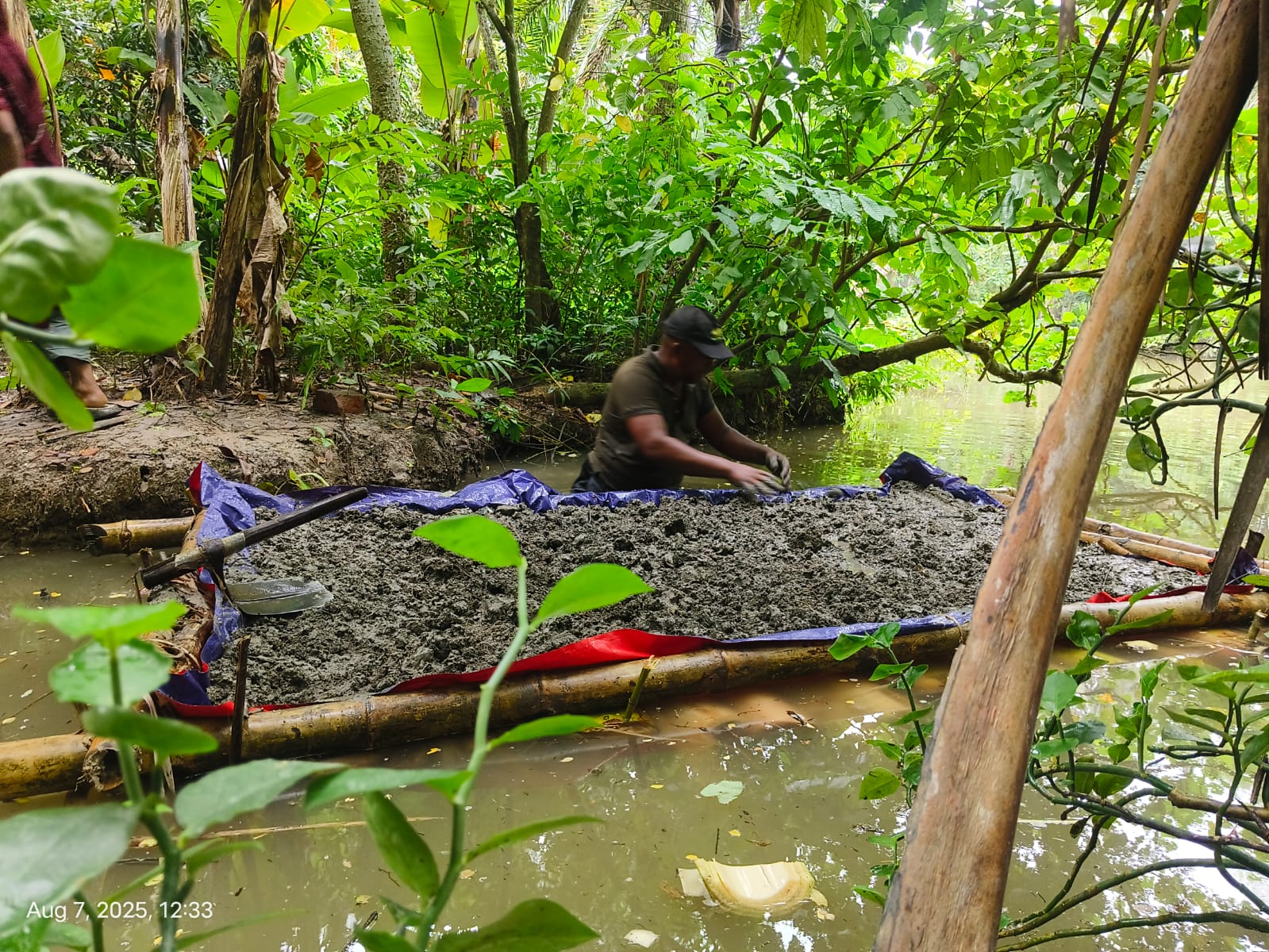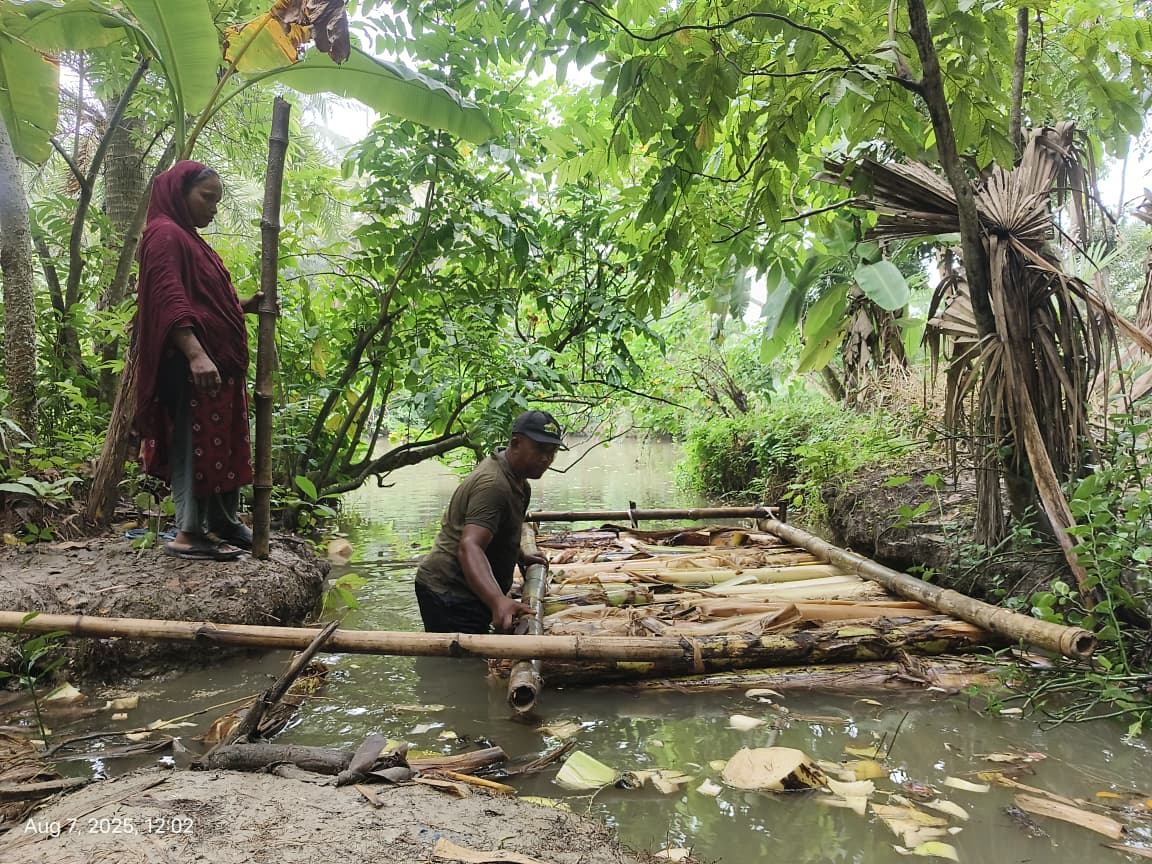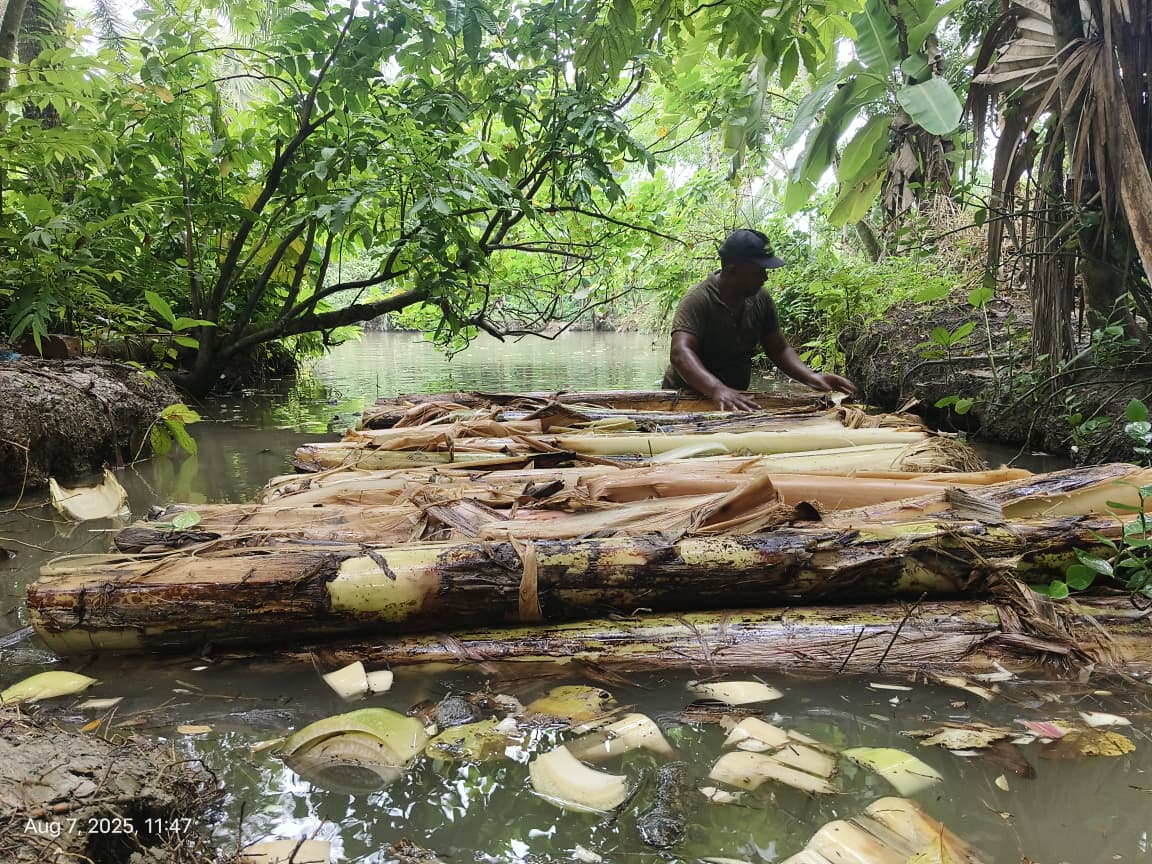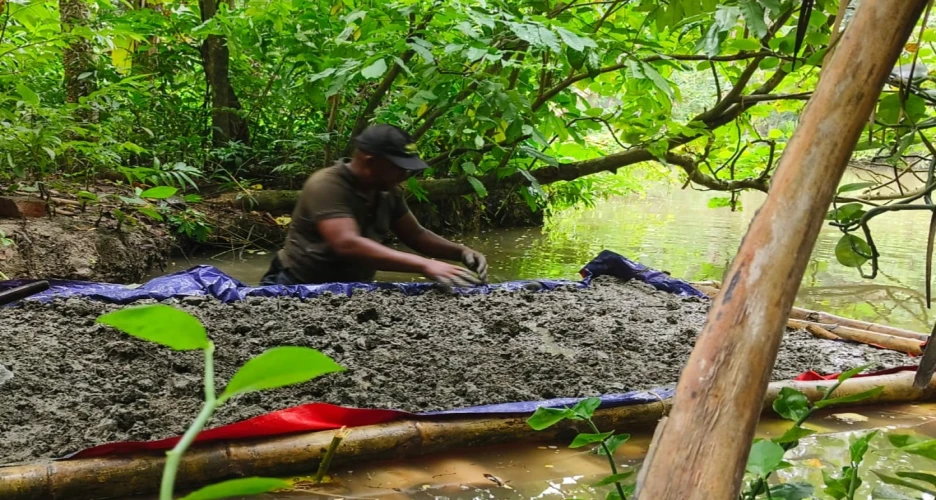Growing Crops on Water: A Case Study from Ramnathpur, Paikgacha Background
Background
Ramnathpur in Paikgacha Upazila faces long waterlogging and rising soil salinity. These conditions make normal field cultivation hard and risky. To help farmers learn climate-smart practices, AOSED set up a Climate Field School in the village. In August 2025, under the ALTER Project with cooperation from Bread for the World, AOSED introduced a floating-bed hydroponic system. Instead of vegetables, the team planted a saline-tolerant rice variety, BINA-117, so farmers can see whether rice can be grown above water when the soil is too salty or flooded.
The problem we set out to solve
During the wet months, many homesteads are surrounded by ponds and canals, but their nearby lands stay under water or turn saline. Farmers asked for a method that could use the waterbody itself for growing crops. They also wanted a low-cost system that uses local materials and simple care, so that women and youth at home could manage it.
The intervention
AOSED designed a floating rice bed that sits on the surface of a canal. A bamboo frame was tied together and lined with a strong tarpaulin to hold a light growing mix. This mix was prepared from well-decomposed organic matter and nutrients so that plant roots can feed without depending on damaged soil. As we see in the photo, a farmer is spreading the mix and shaping the bed. BINA-117 seedlings were then placed at regular spacing. The raft is anchored to bamboo poles so it stays in place when water levels move up or down.

How the demonstration works
The Climate Field School team chose a shaded corner with gentle water flow and easy access from the bank. Farmers helped build the raft, fill the mix, and plant the seedlings. Care steps were shown in simple language: checking raft buoyancy, topping up the nutrient solution, removing weeds, and protecting young plants from fish, ducks, or birds. Because rice needs steady nutrition, the team set a schedule for light, regular feeding and for testing small adjustments if leaf color changes.

Training approach
The school follows a “see, do, and repeat” style. First, facilitators demonstrated each step. Next, farmers practiced the same step with guidance. Women from nearby households were invited to manage daily checks, as this fits homestead routines. Youth volunteers learned to keep short records—plant height, leaf color, and number of tillers—using notebooks and phone photos. AOSED planned weekly follow-up visits in the first month and then fortnightly visits as the crop grows.
Early observations and community response
This is the first season, so results are not yet available. Early signs are practical and positive. Farmers said the method feels familiar because it uses bamboo, rope, and a raft—materials they know well—yet it offers a new way to grow when land is unusable. Interest is high because BINA-117 is known locally as a salt-tolerant option, and the floating bed keeps roots away from the worst salinity in the soil. Community leaders requested that the demonstration remain open for visitors so more farmers can learn.

Anticipated challenges
The team expects a few challenges and is ready to adjust. Water quality may change with rain and tides, so nutrient balance will be watched closely. Strong wind can push the raft, so anchoring points were doubled and checked after storms. Algae and water insects may compete with the crop, so farmers are using safe, non-toxic methods to keep the surface clean. If salinity rises sharply, the team will review feeding schedules and shading, and will document plant response for future guidance.
What success will look like
Success in the coming weeks will mean steady tillering, healthy green leaves, and strong panicles later in the season. A first harvest from the raft would show that households can produce rice even when plots are waterlogged or too saline. Confidence among women and youth to build and manage rafts on their own will be another sign of success. AOSED will track simple indicators: days to tillering, plant height over time, number of panicles, grain fill, estimated yield per square meter of raft, household use of the harvest, and farmer satisfaction.
Safety, costs, and upkeep
The design keeps people on firm ground while working from the bank. Gloves were suggested during bed preparation, and safe footpaths to the water’s edge were arranged. Costs stay low by using bamboo, rope, and a durable liner. The raft frame can be reused; only the growing mix and seedlings need to be renewed each cycle. BINA-117 seed was sourced through local channels, and AOSED will help farmers plan for the next cycle based on what they learn this season.
Learning plan and next steps
Over the season, the Climate Field School will host short review sessions where farmers share observations and photos, compare plant growth, and discuss what to adjust. AOSED will compile the learning into a simple Bangla guide with step-by-step photos from Ramnathpur. If the first cycle shows promise, two more rafts will be set up in different ponds to test performance under varied water conditions. A small savings group may be formed so families can pool funds for liners and seed in the next season.
Conclusion
Floating-bed hydroponics for BINA-117 offers a practical path for rice cultivation when fields are flooded or soils are too saline. It turns ponds and canals into productive spaces and gives households a way to test climate-resilient rice close to home. The final results will come in the next weeks and months. For now, the community’s response is hopeful, and the learning process is active. With steady guidance from the Climate Field School and support from Bread for the World through the ALTER Project, AOSED is helping Ramnathpur farmers explore a new way to keep staple food production going in a changing climate.




